Just off the highway at Buckland, formerly Prosser’s Plains. Google Maps.
Foundation stone laid 1846. Consecrated 1850.
This little church is best known for its large window which is claimed to date to the 14th century. The myths surrounding the window are looked at in a post on the Stained Glass Australia site. While the window isn’t 14th century, the design of the church is.
Better photos & some background.
The headstones are around and in front of the church.
PROSSER’S PLAINS CHURCH.-The foundation-stone of this Church was laid on Wednesday last, the 12th instant, . The Venerable Archdeacon Marriott, attended by the Rev. J, P. Gell and the Rev. F. H. Cox. The Archdeacon was received at the site by a considerable number of the inhabitants and neighbours and the children of the parish school. The day was most propitious for the event, but the effect of the late rains upon the roads and rivers prevented many distant well wishers of the work from being present. The proper office appointed for this diocese was used on this occasion, the clergy and people joining. After the 100th Psalm had been sung, suitable Scripture sentences were read by the Archdeacon, with a preliminary exhortation. This was followed by a short Litany. The stone was then offered in behalf of the donors by J. Forster, Esq , Police Magistrate of the district, and the Blessing of the Almighty implored on the undertaking and all concerned in it.
…
Part of the 118th Psalm was then sung, and the stone deposited with the following inscription : “That GOD may in this place be glorified, and the prayers and praises of the Faithful continually offered, until CHRIST shall come again, this. stone it laid by Fitzherbert Adams Marriott, Archdeacon of Hobart Town, to be the foundation (if God will) of a Church, which shall bear the name and commemorate the ministry of Saint John, the Baptist and Preacher of Repentance, on the Eve whose Festival the quarry whence it is hewn was opened.”
This ceremony performed was succeeded by thanksgiving and an appropriate address by the Archdeacon. In reference to the absence of the Bishop, the rev. gentleman assured his hearers that, though absent in person, his heart was with them ; that his anxious wish had been to take a part in this day’s work. But they were all aware that important services for the welfare of his Church had called the Bishop from his diocese before these preparations could be matured. The style of the intended building is that of an English village Church of the 14th century, the purest age of Gothic architecture. The site is well chosen, being central with regard to the town of Buckland, and from its elevated position, commanding the neighbourhood round for a considerable distance. The school-house adjoining is rapidly approaching completion, and will combine to form another and most important feature in this newly formed parish.
The Courier, 19 August 1846
[This article includes a long description of the church, so it has been split.]
CONSECRATION.
The Church at Prosser’s Plains was consecrated on the 15th instant [January 1850]. The singular beauty of the fabric has been heard of in many quarters, and was doubtless a contributing cause to the gathering of a considerable congregation, who came to witness and give thanks for its dedication.
The Bishop and attendant Clergy, in their vestments, were met at the church-door by several of the inhabitants of the place, whose petition for consecration having been read by Thomas Crittenden, Esq , the Bishop entered the church, followed by the clergy and by the congregation which had assembled outside. The office of consecration usual in this diocese succeeded. Morning Player was said by the Rev. C. Dobson, the present chaplain of Prosser’s Plains; the Rev. F. H. Cox read the appropriate lessons; and the Rev. Messrs. Tancred and Davenport assisted the Bishop at the altar. The sermon was preached by the Bishop ; and, the office of the holy communion being ended, the people were dismissed with his benediction. It is not too much to say that many who were present felt deeply the privilege of attending a church and a service in which every outward circumstance and detail of worship brought to their hearts the time-honoured sanctuaries of their native land.
The church consists of a nave and chancel, with a north porch, mid vestry on the south of the chancel. The length of the interior from east to west is 64 feet, (nave 44 foot, chancel 20 feet;) the width 23½ feet; the height, from the floor to the roof-ridge. about 38 feet. The church is entered by a massive door, with iron bundle, and hinges of scroll-work, after an ancient pattern, ably executed by a country blacksmith.
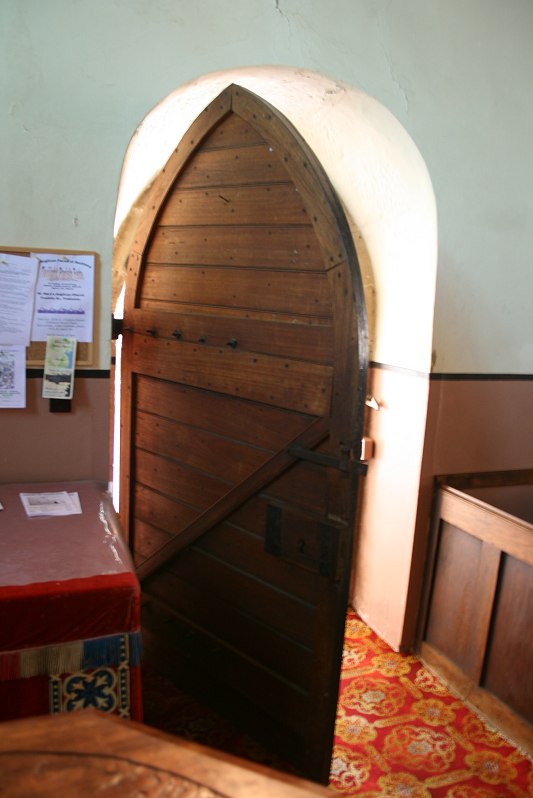
Immediately within the church on the right hand, is the font, the gift of the Archdeacon of Hobart Town: it is octagonal, the bowl springing by a well-wrought moulding from the carved shaft, which again dies gracefully into the base; the whole being raised on an octagonal plinth, round which are placed kneeling-stools for sponsors; it is lined with lead, and provided with a water-drain. The pulpit stands in the south-east corner of the nave: this also is octagonal ; the two front panels being carved with tracery in the head, and filled in with velvet embroidered in gold thread with the Scriptures, “I have a message from God unto thee”–and ” He that hath ears to hear, let him hear.” Under the chancel-arch, on the south side, is the Prayer-desk; and beside it, a desk for the Holy Bible, facing the congregation. There are pews of the colonial lightwood on either side of the central alley of the nave: these are uniform, with low backs, and all provided with kneeling-stools ; their simplicity and real comfort presenting a remarkable contrast to the enclosures which more or less hinder the worship of so many of our congregations.
The windows of the nave are glazed with ground glass. The chancel, which is raised two steps above the nave, is paved with encaustic tiles, from a celebrated Staffordshire manufactory. The Lord’s Table stands on another step, and is covered with an exceedingly rich velvet cloth, embroider”! in needlework, with the sacred monogram, and other appropriate ornaments. The Communion vessels are of silver, the workmanship of Mr. Butterfield, an eminent church-architect. The Altar books are remarkable for their costliness and exquisite binding. But the most striking objects in the interior of this Church are the windows of the chancel–a large eastern window of three lights, and a smaller one of two lights in the northern side. These are filled with stained glass, the work of Mr. O’Connor, a London artist.
The east window represents in the head our Messed Saviour upon the Cross, with His Mother and the Beloved Disciple on either side; and in the three lights St. John the Baptist (in whose name the Church is dedicated) in the principal scenes of his ministry ; viz., Preaching in the Wilderness, Baptising our Lord, mid Suffering Death in the Prison. The north window exhibits the symbols appropriated in Christian art to the four Evangelists.-(Rev. iv 7.)
When it is added, that the roofs of both nave and chancel are of very high pitch, and open to the ridge, of native wood stained a dark colour, and the rafters, colliers, and braces being thickly set, and producing a good perspective effect, the reader will have no difficulty in comprehending the details of this very interesting village church.
Of its external features it will suffice to mention the excellent masonry of the walls, which, with their massive staged buttresses, present an appearance of great solidity; the windows with their foliated tracery of the 14th century ; the ornamental gable-crosses at the east of chancel and nave ; and the simple belt-gable at the west-that frequent characteristic of an English village church. The aesthetic effect of the whole was felt by many to be in harmony with the Psalm, “Quam Dilecta,” used at the consecration ; and the words “O! how amiable are Thy dwellings, Thou Lord of Hosts !” found a response in many hearts.
It will be matter of interest lo many to know that the whole cost of the building, exclusive of the ornamental features of the interior, which have been described, was about nine hundred pounds ; half of which sum was con- tributed from public funds, agreeably to the Church Act of the colony, and the remainder chiefly by residents in the neighbourhood. The stained glass, encaustic tiles, altar cloth, linen, and service books, alms-chest, &c, ail of which deserve a more minute description than the scanty notice which has been attempted, were the joint contribution of the late chaplain and architect of the church, various members of his family in England, and by some of his personal friends. The communion-plate was sent out as an offering from his former parishioners in Sussex.
Is it too much to hope that the consecration of this simple and unpretending, but very beautiful church is the beginning of a new era in the ecclesiastical architecture of the colony; und that the unhappy mistakes that have been made in the structure and arrangement of most of our Tasmanian churches will be of less frequent occurrence than heretofore ?
The Courier, 23 January 1850
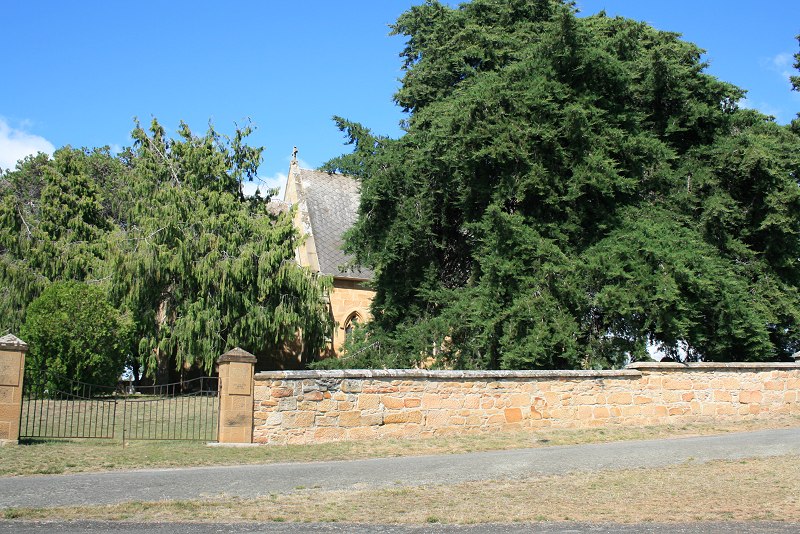
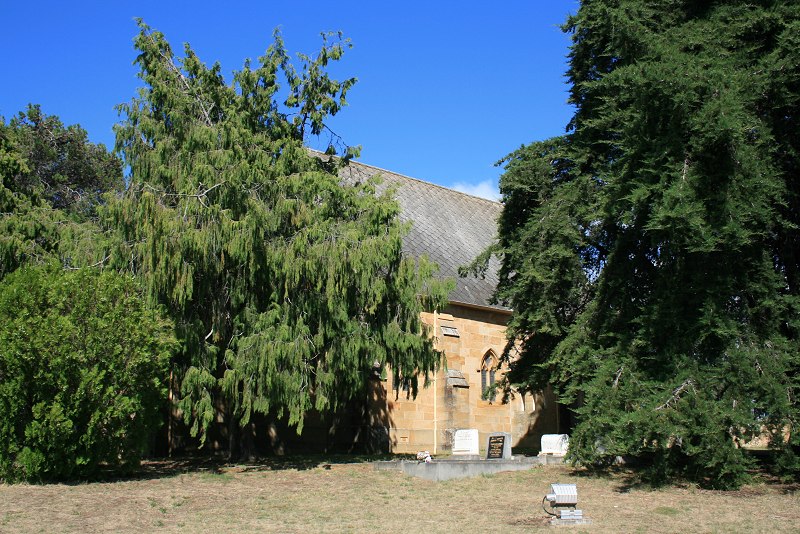
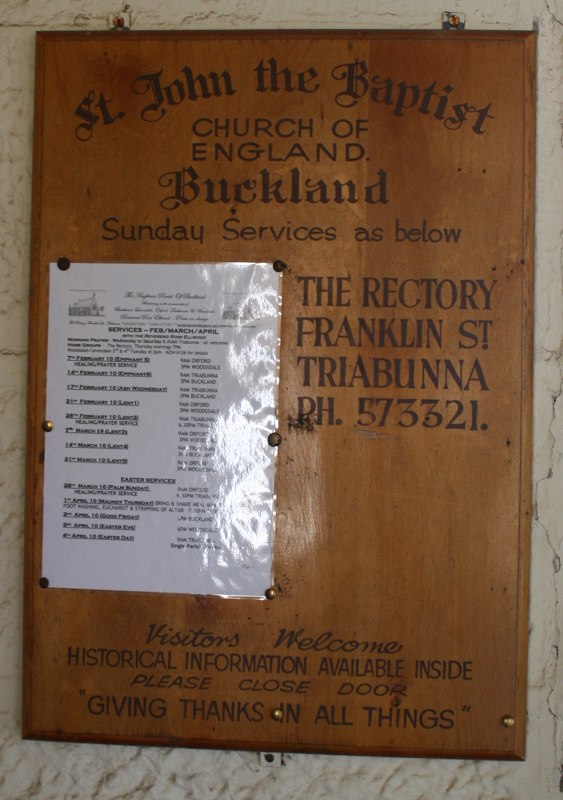
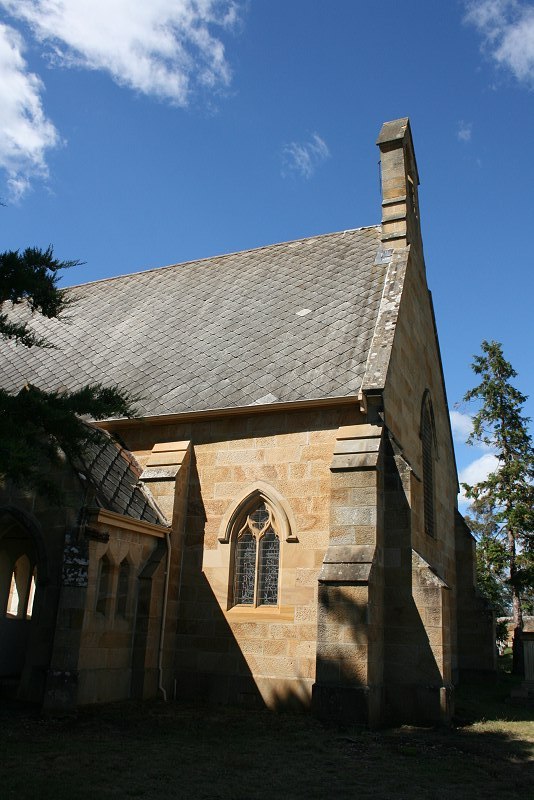

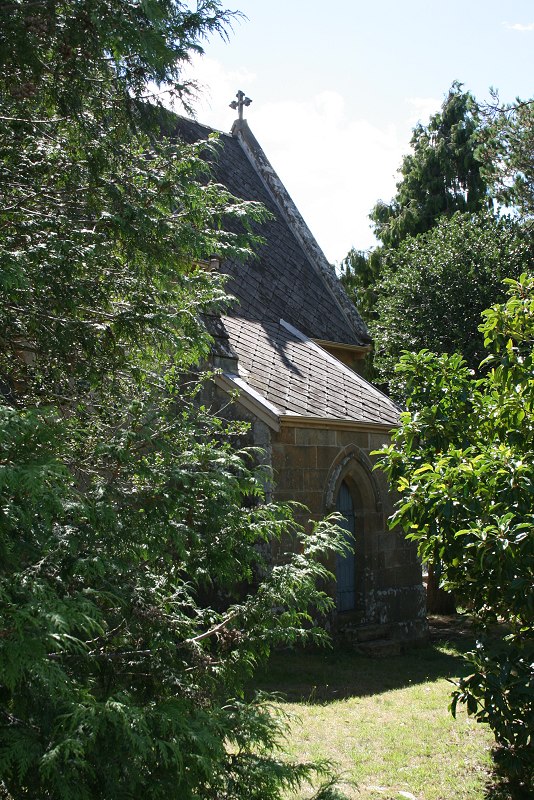
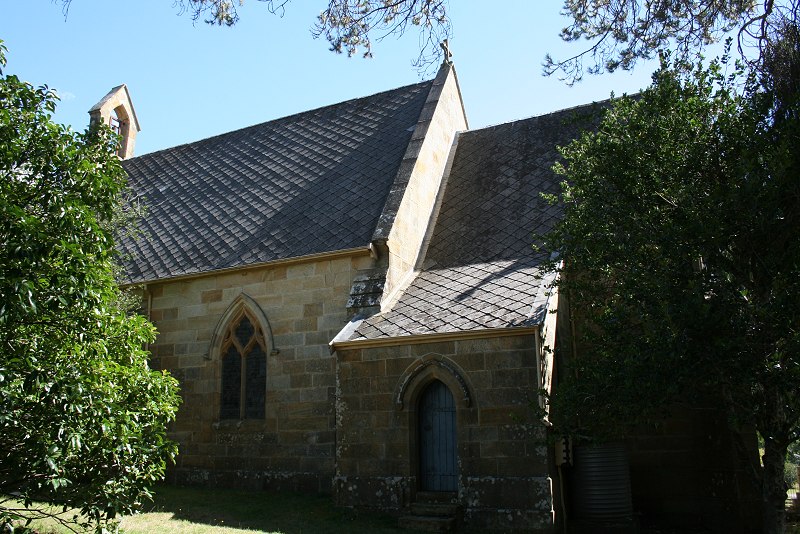
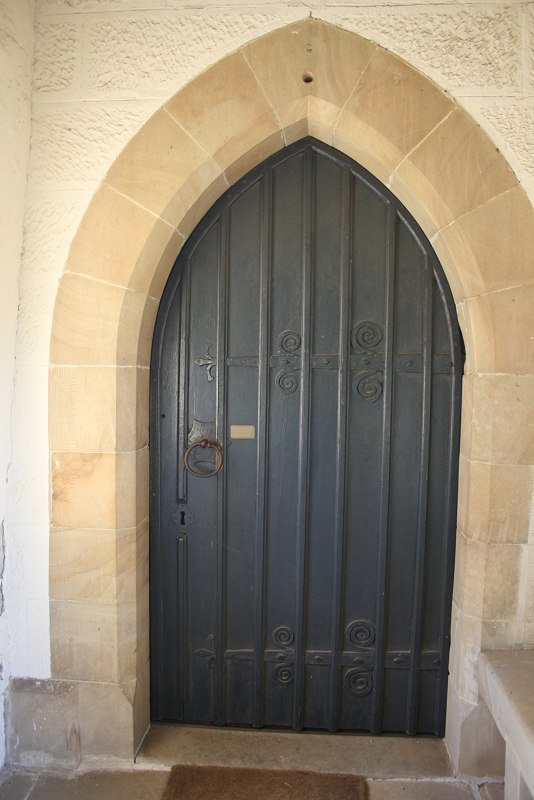
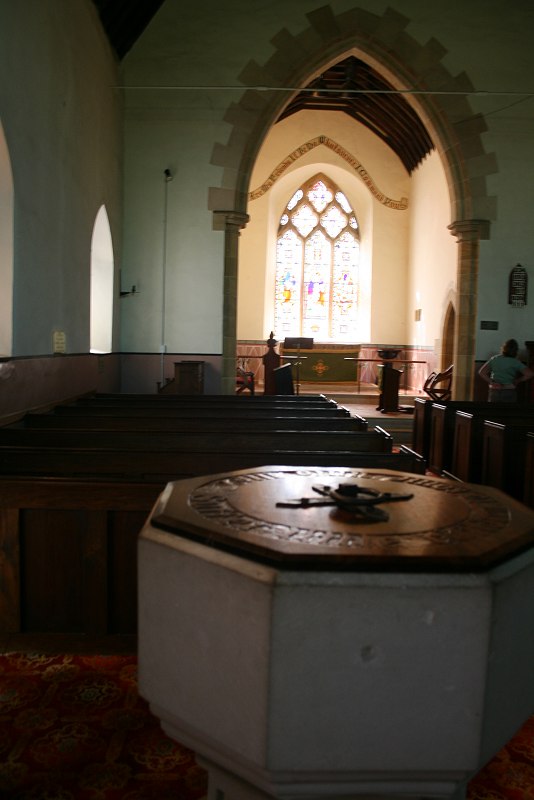
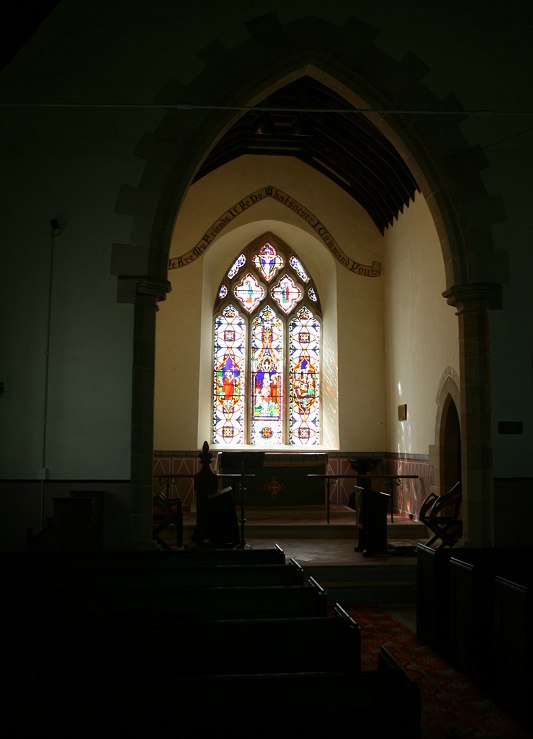
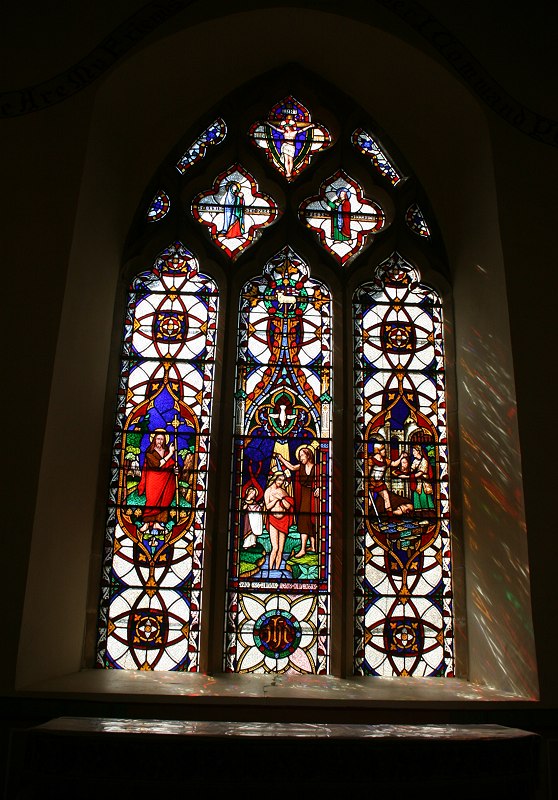

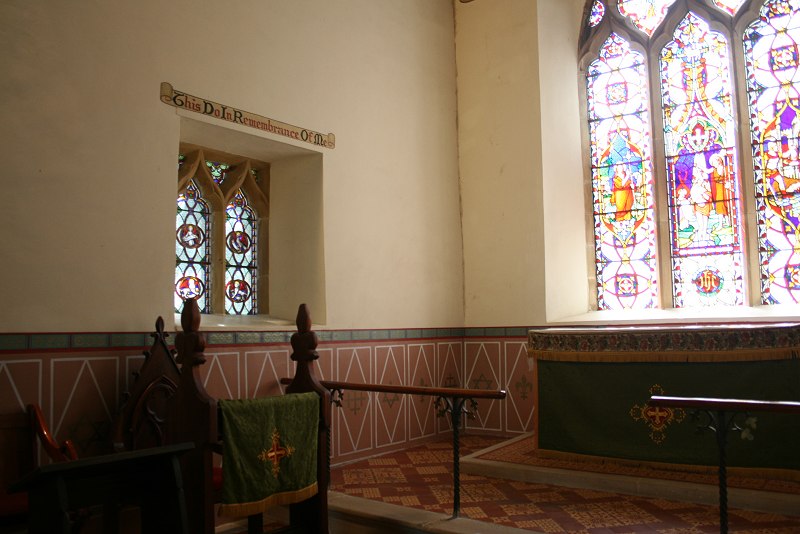
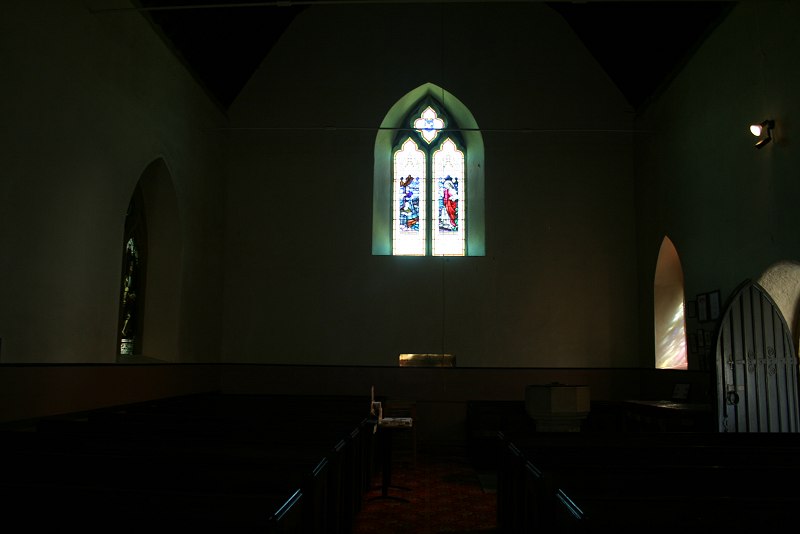
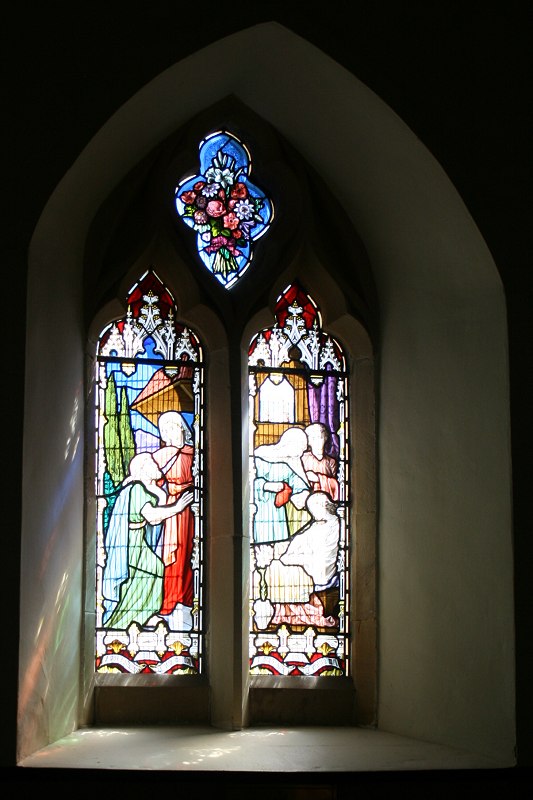
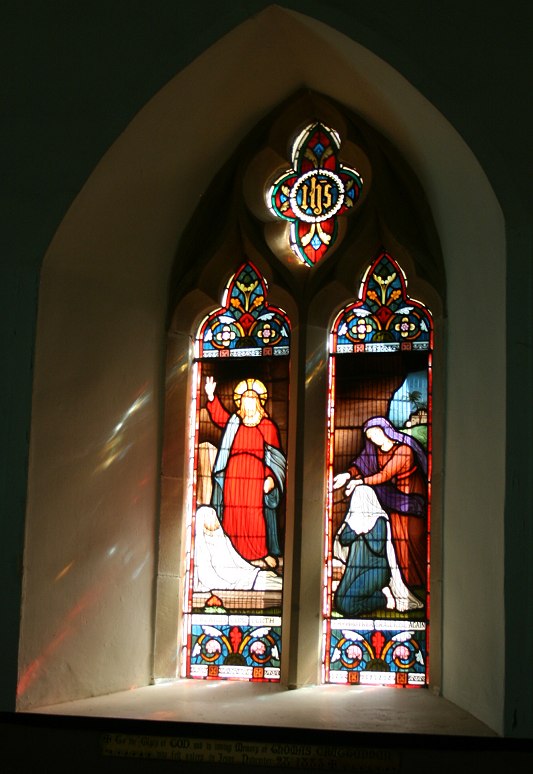
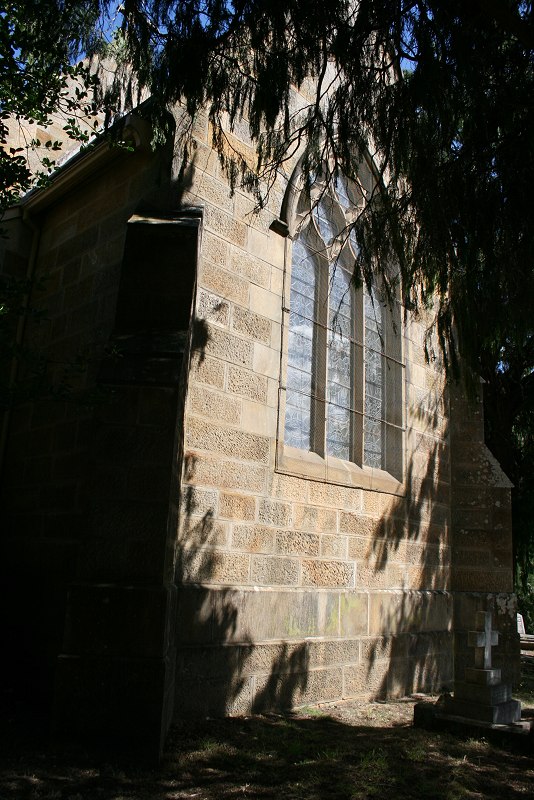
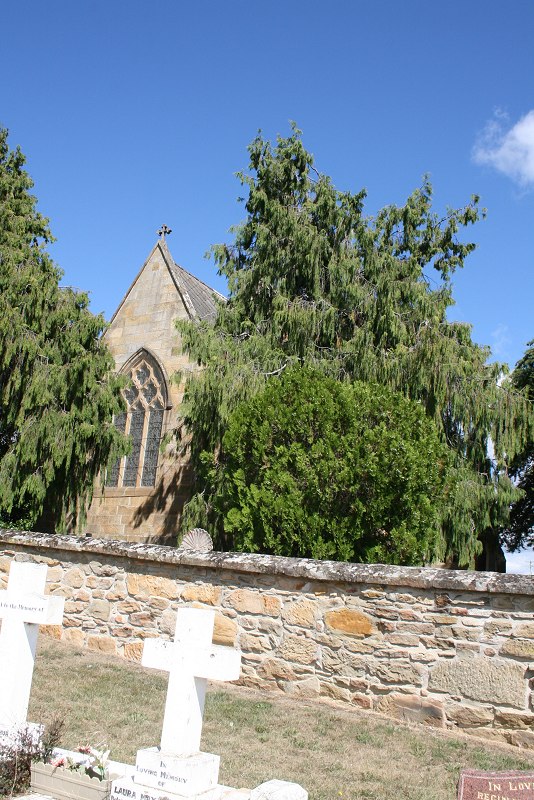
robert shand
December 18, 2017 at 4:17amI am seeking the date of death of Gregson John Tomlinson in 1992. I understand that his ashes are in a niche in the Columbrian wall at St John the Baptitst Church cemetery at Buckland
Monissa Whiteley
January 6, 2018 at 4:55amYou’ll have to contact the church directly, I should think,